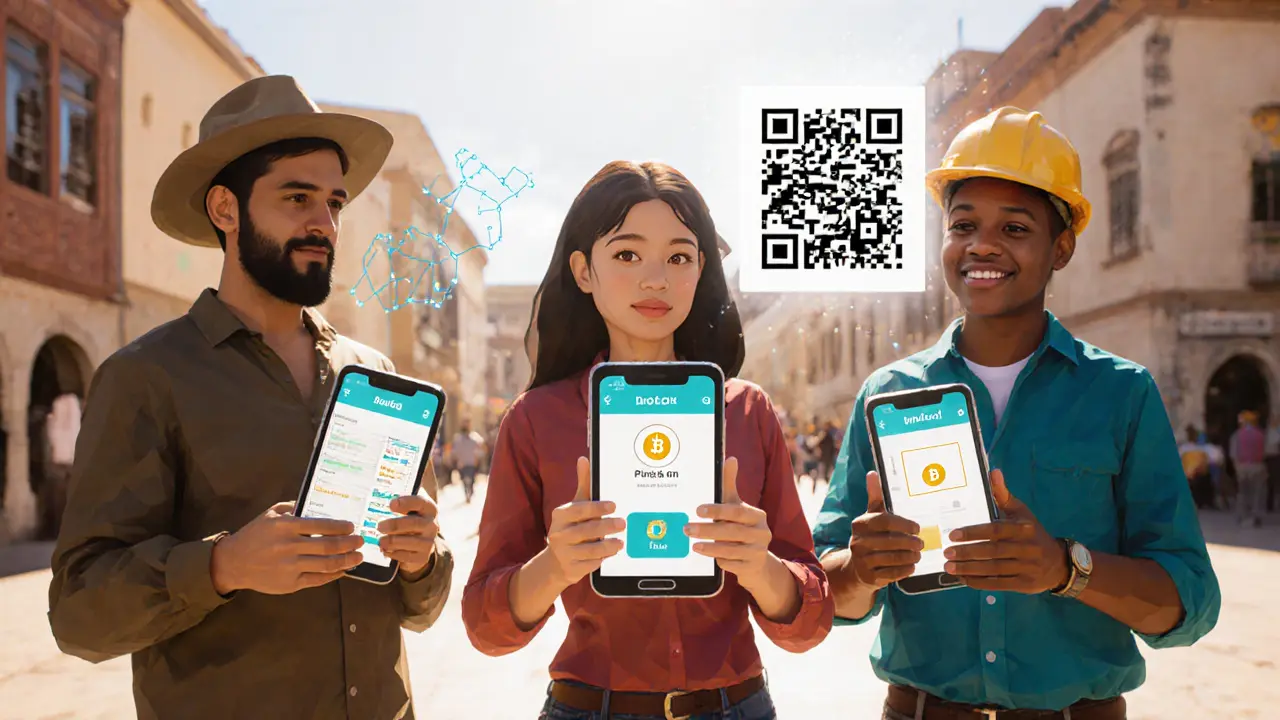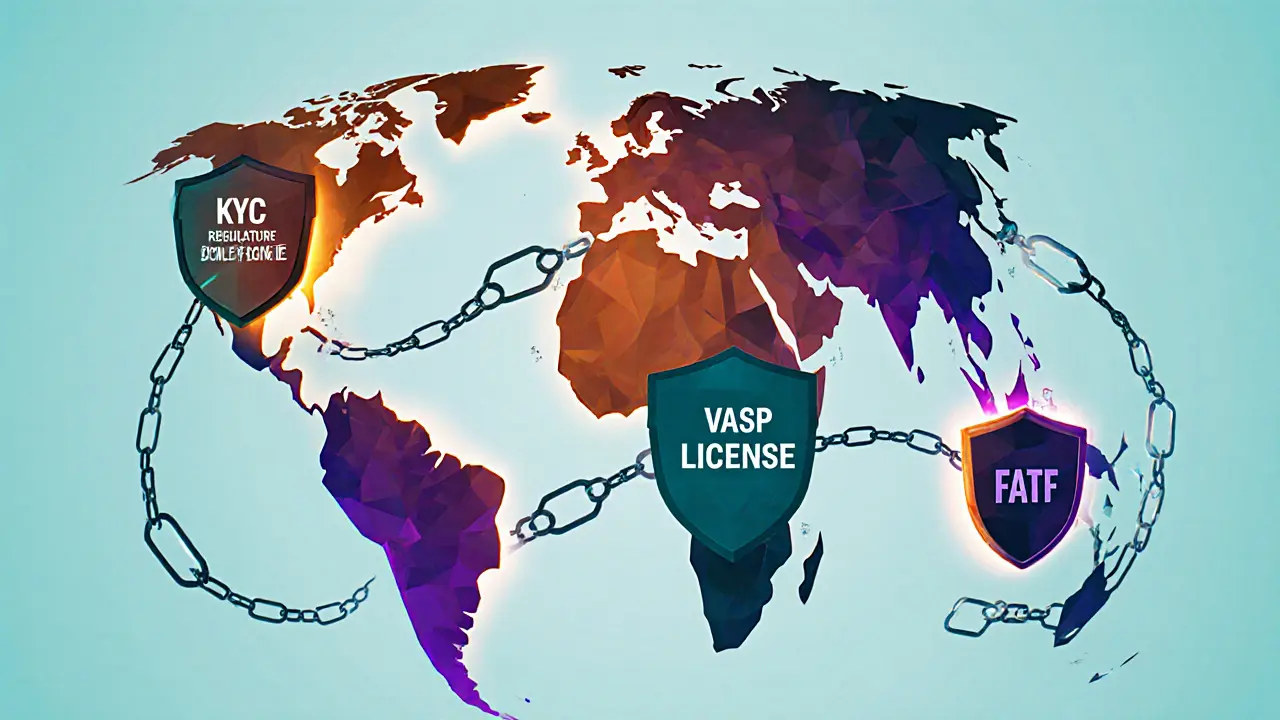Complete Cryptocurrency Prohibition in Bolivia: What Changed and Why It Matters
 Nov, 14 2025
Nov, 14 2025
Bolivia Remittance Savings Calculator
Send Money to Bolivia
Bolivia now uses USD-pegged stablecoins (like USDT/USDC) for cross-border payments. Calculate how much you could save compared to traditional banking.
For nearly a decade, Bolivia was one of the strictest countries in the world when it came to cryptocurrency. If you used Bitcoin, Ethereum, or any other digital asset there, you were breaking the law. The Central Bank of Bolivia banned all cryptocurrency activities in 2014, and that ban stayed in place through multiple official resolutions - even one in 2020 that doubled down on the restriction. People in Bolivia couldn’t legally buy crypto, trade it, or even use it to send money abroad. The government’s reasoning was simple: protect the national currency, prevent fraud, and avoid financial chaos. But what happened next surprised almost everyone.
The Ban Was Lifting - and Fast
On June 26, 2024, Bolivia flipped the script. Resolution No. 82/2024 officially ended the cryptocurrency prohibition. It wasn’t a slow, cautious change. It was a full reset. Within months, the country went from being one of the most hostile environments for crypto in Latin America to one of its most active.
By March 2025, the Central Bank of Bolivia was already using USD-pegged stablecoins for cross-border payments and remittances. That’s not just tolerance - it’s institutional adoption. The same institution that once called crypto a threat to financial stability was now using it to move money across borders more efficiently than traditional banking channels. This shift didn’t happen in a vacuum. It was driven by real demand.
People Were Already Using Crypto - Despite the Ban
Even during the ban, Bolivians found ways to use cryptocurrency. Many relied on peer-to-peer platforms, foreign exchanges, and encrypted wallets to send money to family abroad or protect savings from hyperinflation. The local currency, the boliviano, has struggled for years. Inflation, political instability, and limited access to international banking made digital assets a lifeline for many.
When the ban lifted, the pent-up demand exploded. In the first half of 2025 alone, virtual asset transactions in Bolivia reached $294 million. That’s more than five times what was being used before legalization. One local crypto wallet platform, Meru, saw its Bolivian user base jump by 6,600% within a year. These aren’t guesses - they’re official figures from the Central Bank.
How Bolivia’s New Rules Work
Legalization didn’t mean no rules. In fact, Bolivia moved quickly to build one of the most detailed crypto frameworks in the region.
On April 16, 2025, Resolution No. 019/2025 gave legal recognition to virtual assets and virtual asset service providers (VASPs). This meant companies could now operate legally - if they registered with the government. Then, in May 2025, Supreme Decree No. 5384 came into force. It created a full licensing system for crypto exchanges, custodians, and payment processors. No more underground operations. If you want to run a crypto service in Bolivia, you need a government-issued license.
These rules are modeled after international standards, especially those from the Financial Action Task Force (FATF). They require KYC (Know Your Customer), transaction monitoring, and reporting suspicious activity. The goal? Prevent money laundering and scams while still letting innovation grow.

Why Bolivia’s Approach Is Different
Other countries in Latin America took different paths. El Salvador made Bitcoin legal tender in 2021 - meaning businesses had to accept it as payment. Bolivia didn’t go that far. Instead, it focused on utility. People use stablecoins to send money home from abroad. Bitcoin is used for international trade. Ethereum and other tokens are traded for investment.
What’s more, Bolivia didn’t try to reinvent the wheel. In early 2025, it signed a Memorandum of Understanding with El Salvador’s National Commission for Digital Assets (CNAD). This isn’t just a handshake - it’s a working partnership. The two countries are sharing tools for tracking crypto transactions, training regulators, and analyzing market risks. Bolivia is learning from El Salvador’s mistakes and successes without having to go through the same trial-and-error phase.
Who’s Using Crypto in Bolivia Today?
The users are diverse. Young professionals use crypto to invest in global assets. Small business owners use stablecoins to pay suppliers overseas without paying high bank fees. Migrant workers send money home faster and cheaper than ever before. Even farmers and artisans are starting to accept crypto payments for goods.
One farmer in Cochabamba started accepting Bitcoin for his organic coffee after his bank blocked international transfers. He now sells to buyers in Spain and Germany using a simple QR code. No wire fees. No delays. No middlemen. That’s the real value - not speculation, not hype. Practical, everyday use.

Challenges Still Remain
It’s not all smooth sailing. The rapid rollout of rules has left some users confused. Not everyone understands how to report taxes on crypto gains. Some platforms still operate in gray areas. And while the government is pushing awareness campaigns, digital literacy is still low in rural areas.
There’s also concern about overregulation. Some startups worry that licensing fees and compliance costs will push them out of the market. Others fear that if the government changes direction again - say, if a new president comes in - the whole system could be rolled back.
Still, most users agree: the freedom to choose is worth the learning curve.
What’s Next for Bolivia?
Bolivia is now positioning itself as a regulated, innovation-friendly hub for digital assets in Latin America. The Central Bank is working on a digital currency pilot, and international crypto firms are setting up regional offices in La Paz and Santa Cruz.
Industry analysts predict that by the end of 2026, Bolivia could be handling over $1 billion in annual crypto transactions. That’s not because people are gambling on Bitcoin. It’s because the system works. It’s fast. It’s cheaper. And it’s legal.
The country’s transformation from complete prohibition to active adoption is one of the most dramatic policy reversals in global crypto history. It proves that when people need financial freedom, they’ll find a way - and governments that listen can turn crisis into opportunity.
Was cryptocurrency ever completely illegal in Bolivia?
Yes. From May 2014 until June 2024, Bolivia had a complete legal ban on all cryptocurrency activities. The Central Bank of Bolivia prohibited buying, selling, trading, or using digital assets. This was reinforced by Resolution No. 144/2020. The ban was lifted by Resolution No. 82/2024, making crypto legal for the first time.
Can I now legally buy Bitcoin in Bolivia?
Yes. Since June 2024, you can legally buy, sell, and hold Bitcoin and other cryptocurrencies in Bolivia. However, you must use licensed virtual asset service providers (VASPs). Unlicensed platforms still operate illegally. The government has created a registration system for exchanges and wallet providers to ensure compliance with anti-fraud and anti-money laundering rules.
Why did Bolivia lift the crypto ban?
Bolivia lifted the ban because people were already using crypto despite the law - especially for remittances and protecting savings from inflation. The Central Bank realized the ban wasn’t working. It was driving activity underground, not stopping it. With $294 million in crypto transactions in just six months after legalization, the government chose to regulate instead of resist. International pressure and learning from El Salvador’s experience also played a role.
Are stablecoins legal in Bolivia?
Yes. Stablecoins like USDT and USDC are not only legal - they’re actively used by the Central Bank of Bolivia for cross-border payments and remittances. Their value is tied to the U.S. dollar, making them ideal in a country with a volatile local currency. Many Bolivians use them to send money abroad without high fees or delays.
Do I need to pay taxes on crypto gains in Bolivia?
Tax rules are still being finalized, but as of mid-2025, capital gains from crypto are not explicitly taxed. However, the government is working on new tax guidelines for virtual assets. If you’re trading frequently or earning income from crypto, you should keep detailed records. Future regulations may require reporting gains, especially if you’re using licensed platforms that report to authorities.
Is Bolivia’s crypto market safe for beginners?
It’s safer than before, but still risky. Licensed platforms must follow strict rules, which reduces fraud. However, scams still exist - especially on unregulated apps or social media groups. Beginners should stick to government-approved exchanges, avoid high-yield schemes, and never share private keys. The Central Bank offers free educational materials online to help new users understand risks.
How does Bolivia’s crypto policy compare to other Latin American countries?
Bolivia’s approach is more regulatory than revolutionary. Unlike El Salvador, which made Bitcoin legal tender, Bolivia allows crypto as a financial tool without forcing businesses to accept it. It’s also more structured than Brazil or Argentina, which have looser rules. Bolivia’s partnership with El Salvador on blockchain intelligence tools makes it unique. Meanwhile, countries like Algeria and Ecuador still ban crypto outright.


Sean Pollock
November 16, 2025 AT 08:40Shanell Nelly
November 16, 2025 AT 15:13Darren Jones
November 17, 2025 AT 00:28Laura Lauwereins
November 18, 2025 AT 11:44Gaurang Kulkarni
November 18, 2025 AT 15:23Nidhi Gaur
November 19, 2025 AT 04:25Usnish Guha
November 20, 2025 AT 11:28rahul saha
November 20, 2025 AT 13:29